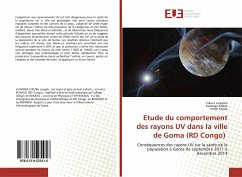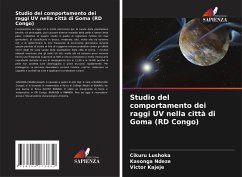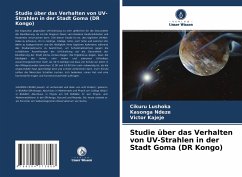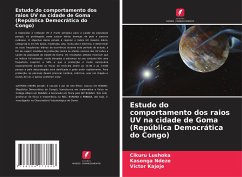
Study of the behaviour of UV rays in the city of Goma (DR Congo)
Versandkostenfrei!
Versandfertig in 6-10 Tagen
27,99 €
inkl. MwSt.

PAYBACK Punkte
14 °P sammeln!
Exposure to UV radiation is very dangerous for the health of the population because if prolonged, it can cause several skin diseases and skin cancers. The objective of this study is to record the daily UV max index, to categorize it into low, moderate, high, very high and extreme UVI; and to determine their daily occurrence frequencies during this study period in order to suggest protective measures against the harmful effects of UV on the health of the population of the city of Goma. The results obtained show that the high, very high and extreme UV indices taken together have a frequency of m...
Exposure to UV radiation is very dangerous for the health of the population because if prolonged, it can cause several skin diseases and skin cancers. The objective of this study is to record the daily UV max index, to categorize it into low, moderate, high, very high and extreme UVI; and to determine their daily occurrence frequencies during this study period in order to suggest protective measures against the harmful effects of UV on the health of the population of the city of Goma. The results obtained show that the high, very high and extreme UV indices taken together have a frequency of more than 50% and that protection is very necessary especially during the midday hours (between 11:00 and 14:00) because unprotected skin will be damaged and can burn quickly. For protection, people should seek shade, cover up, wear a hat and sunglasses, and apply sunscreen.












